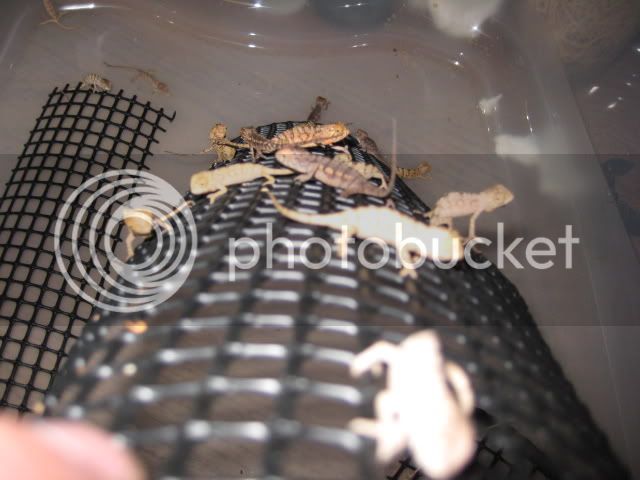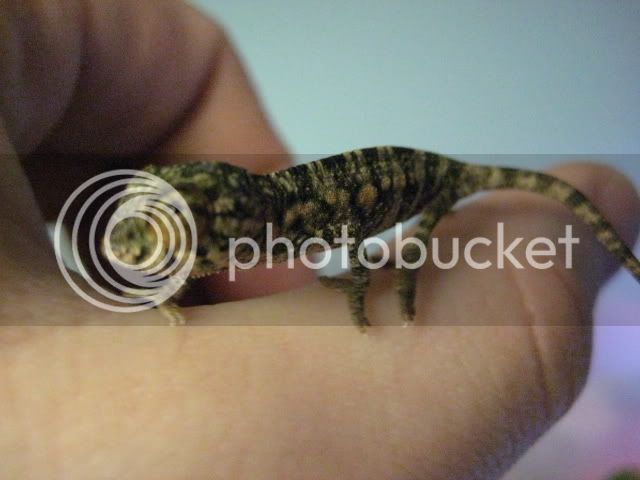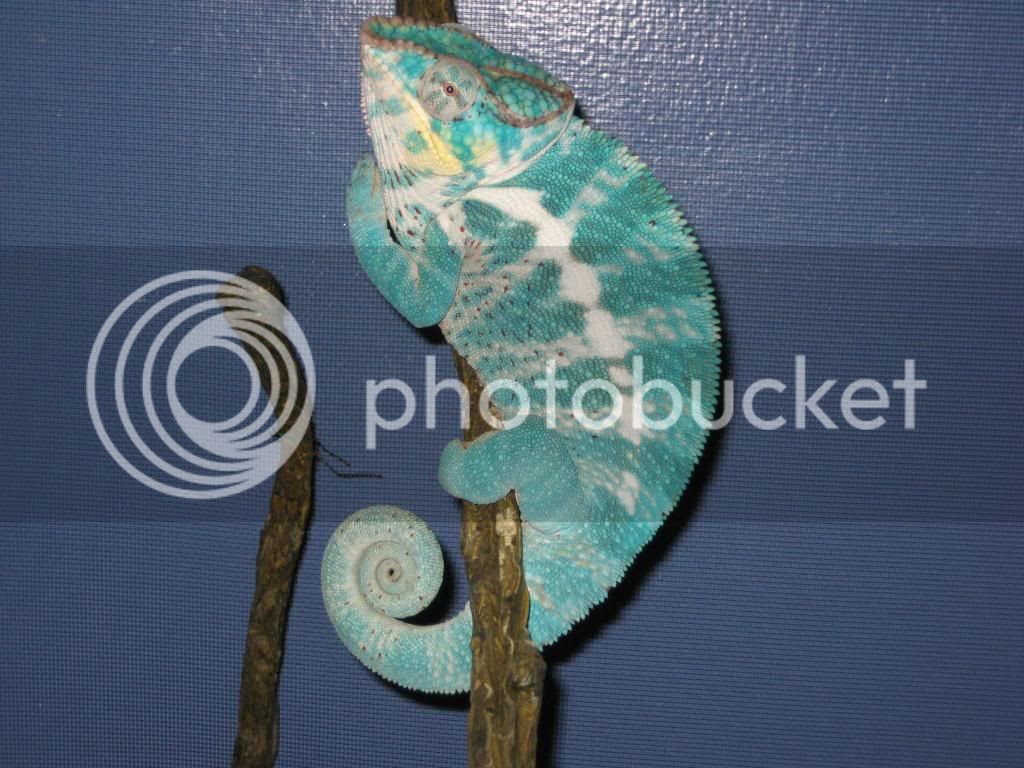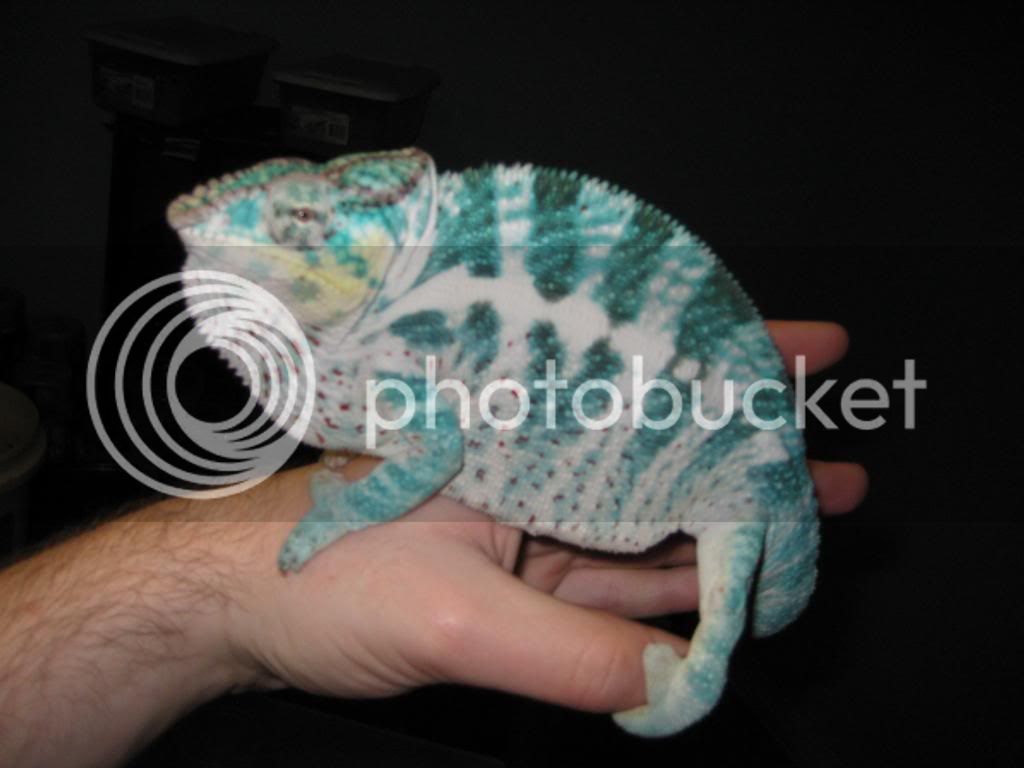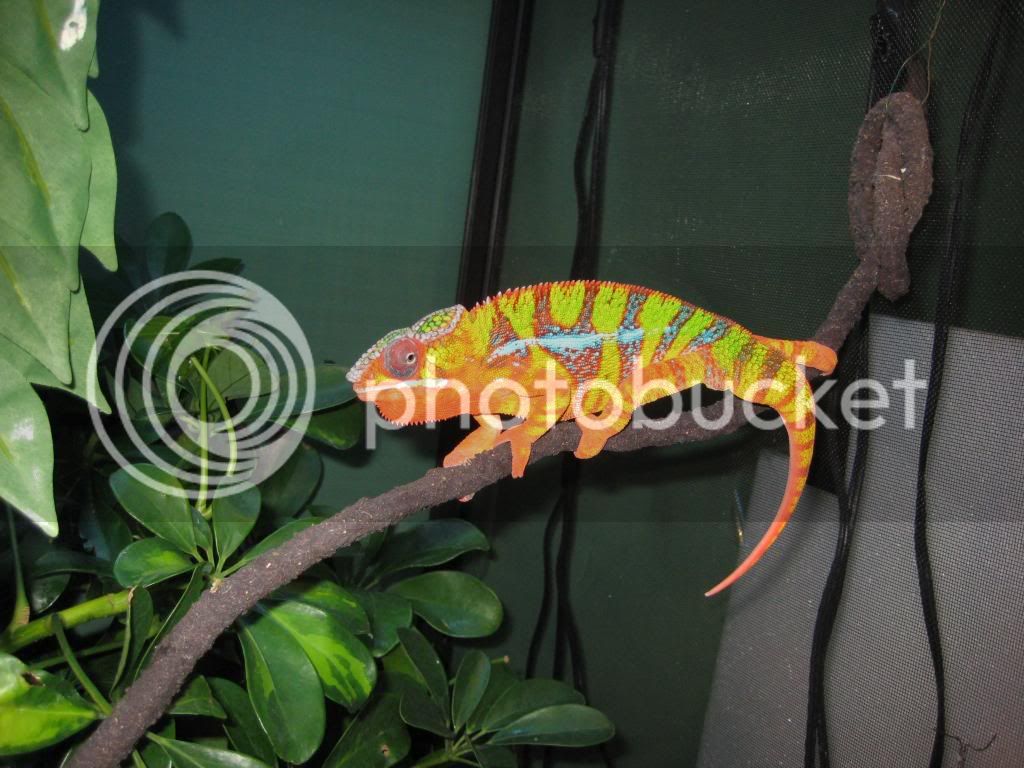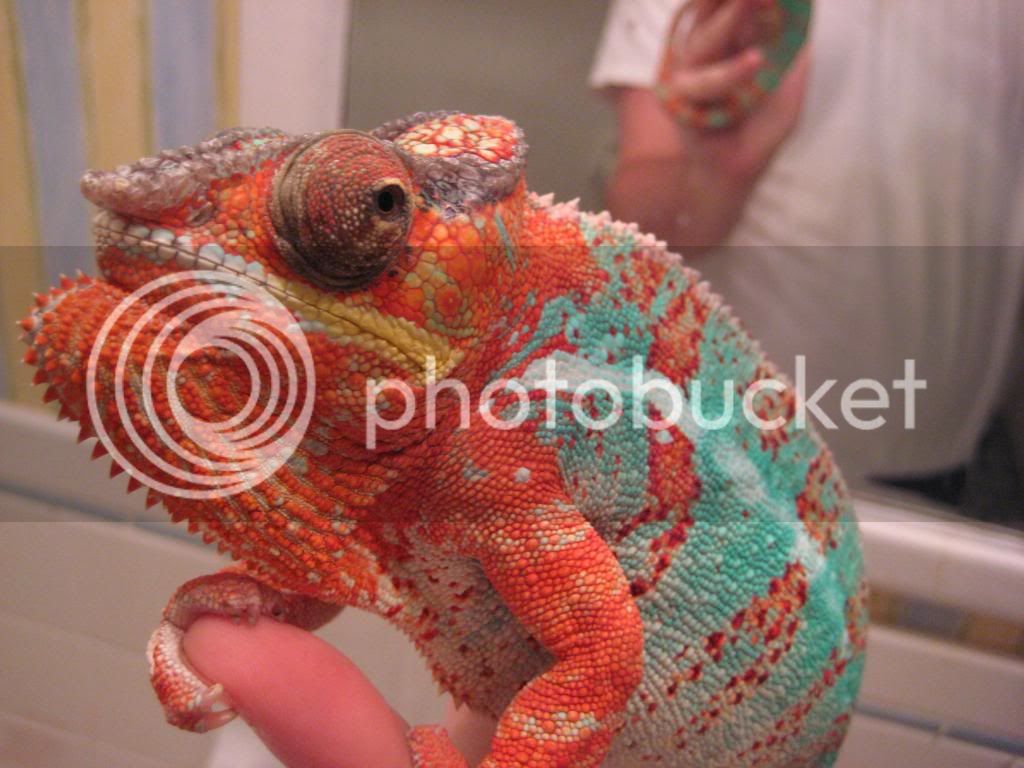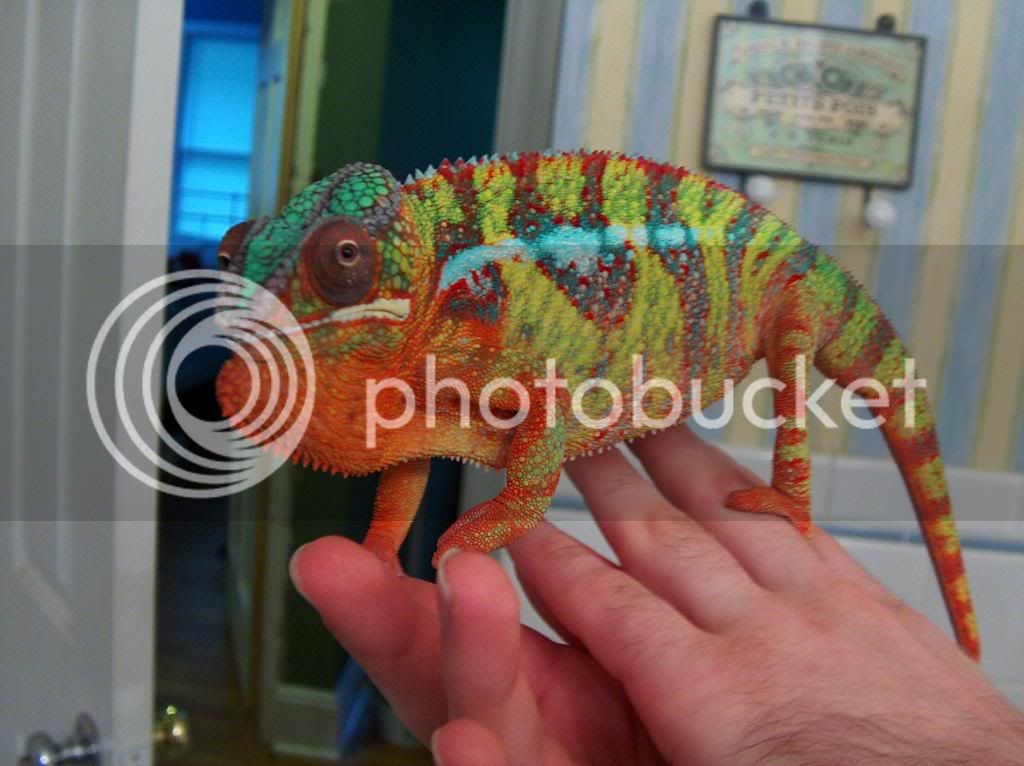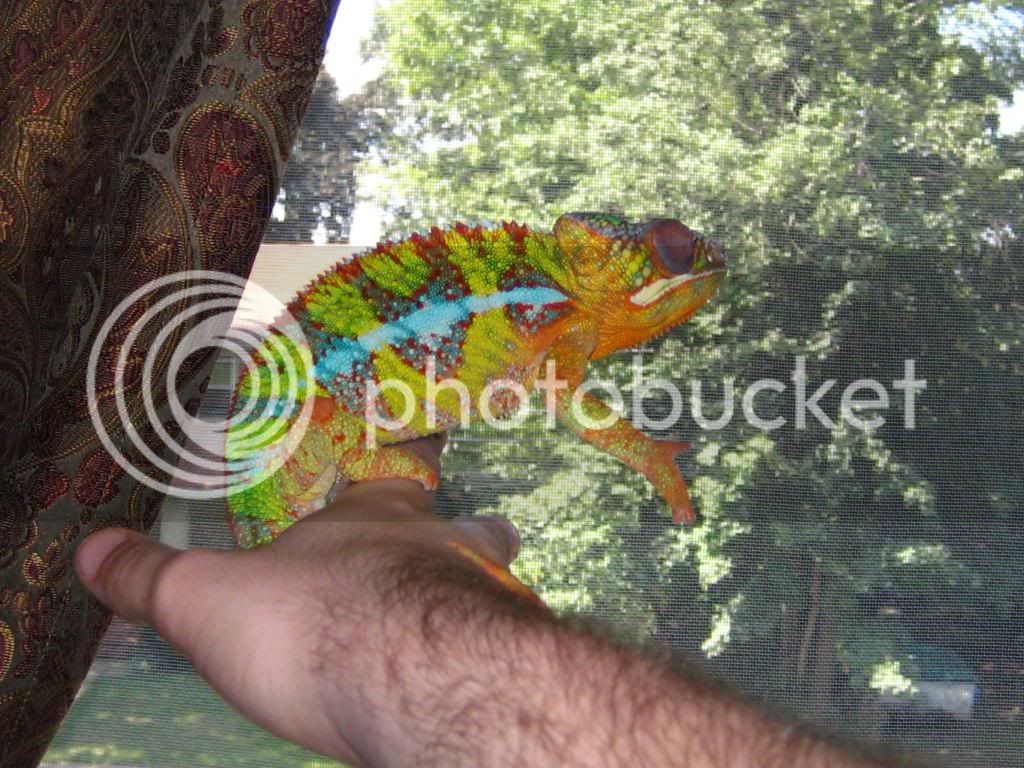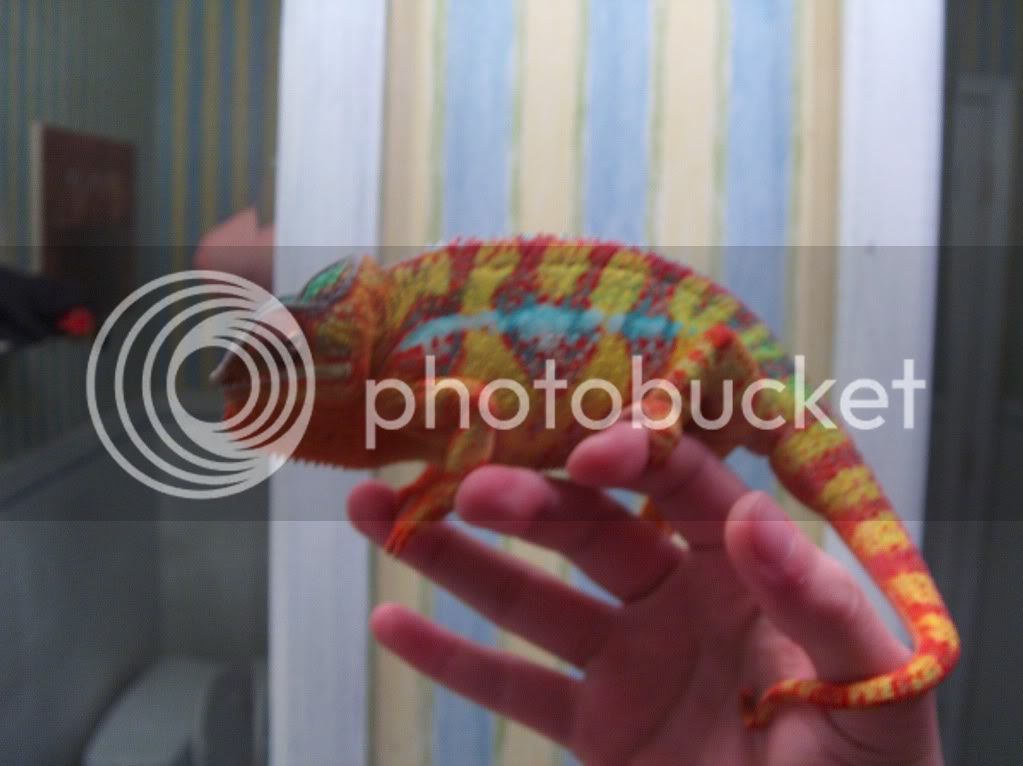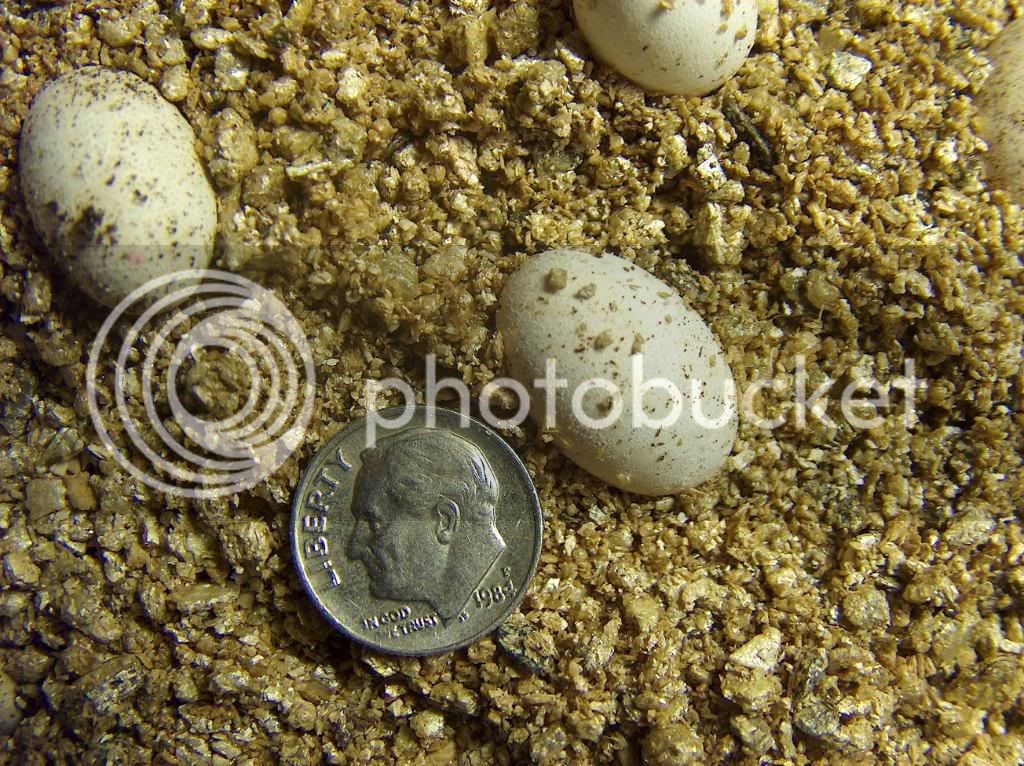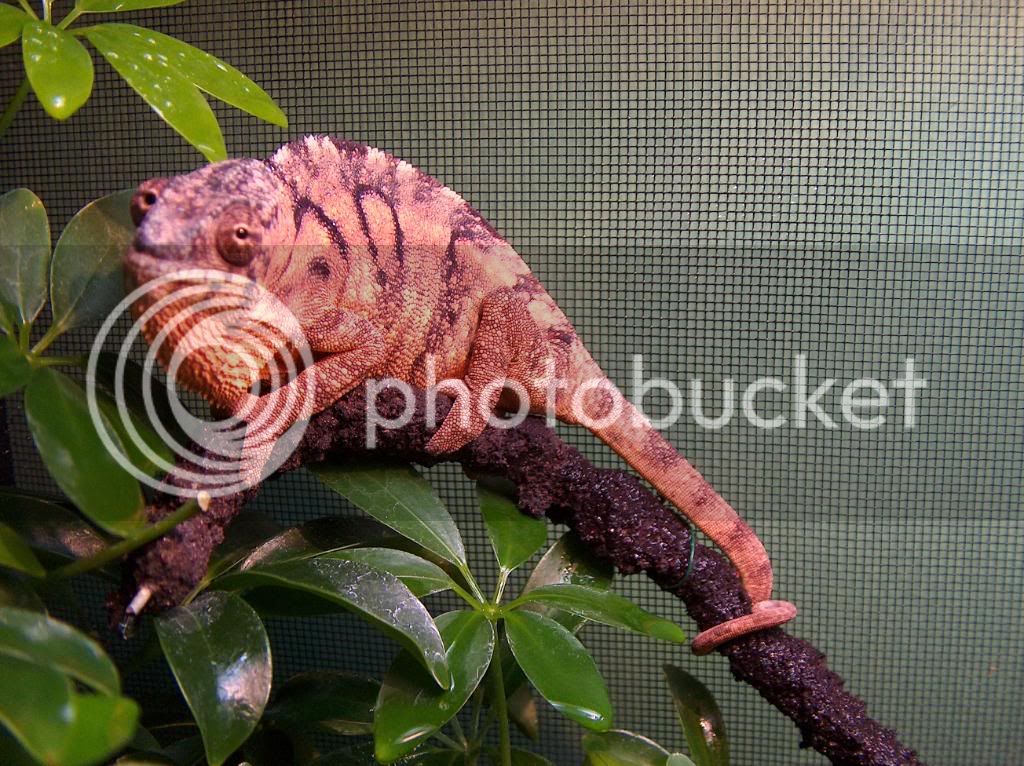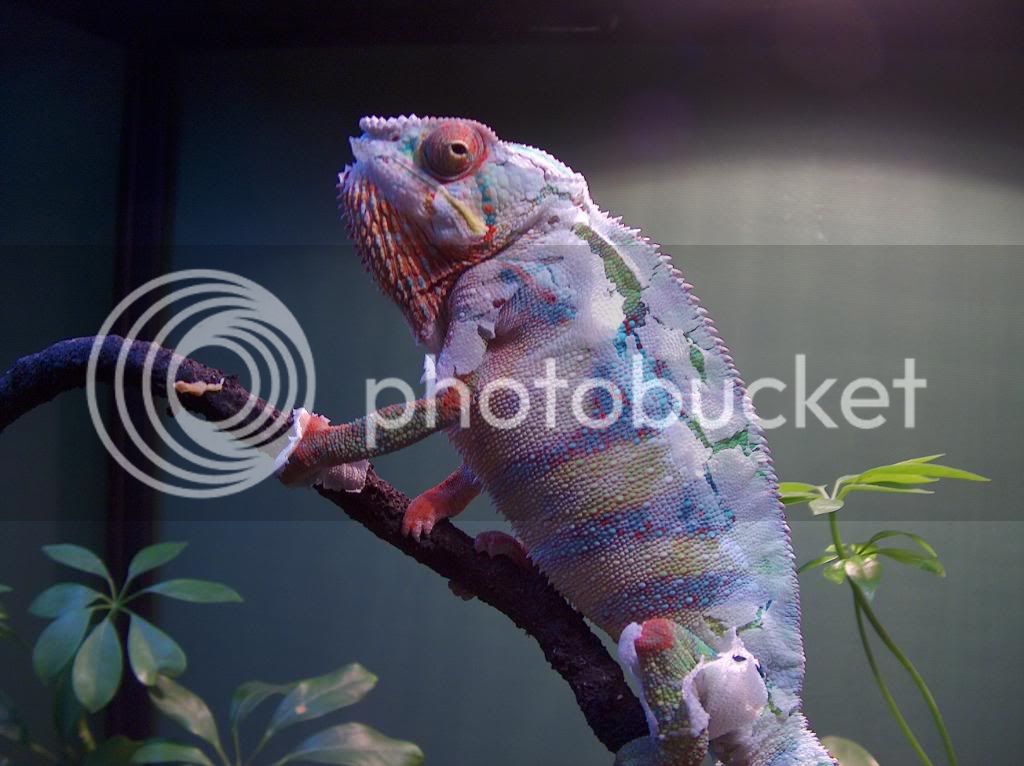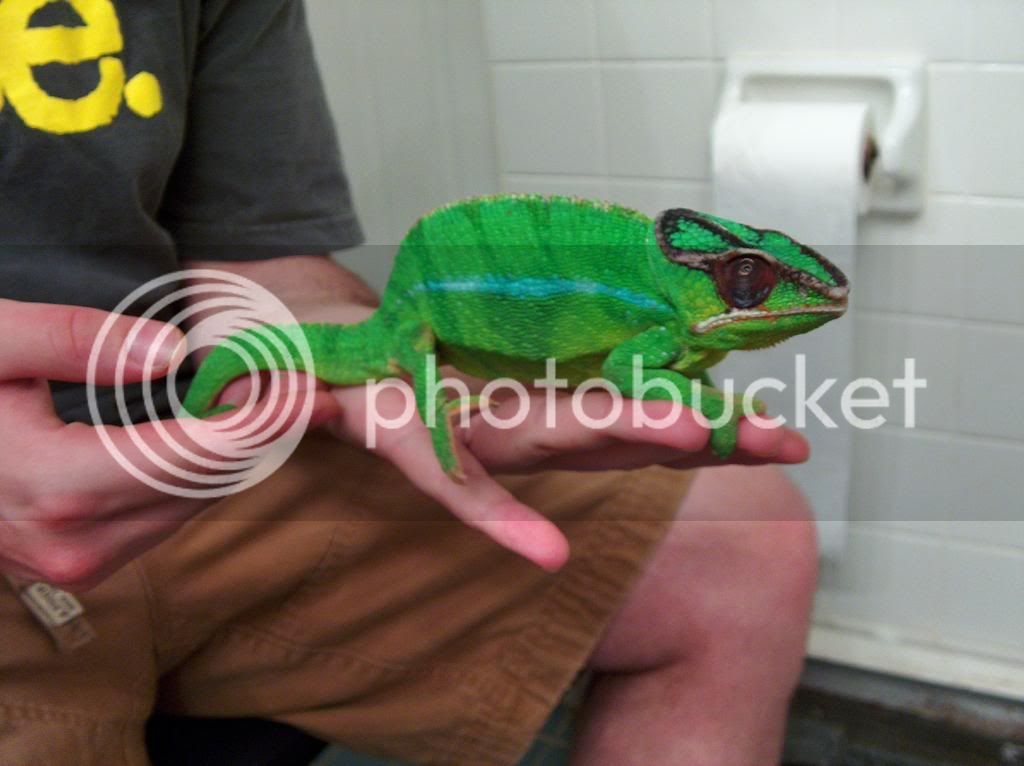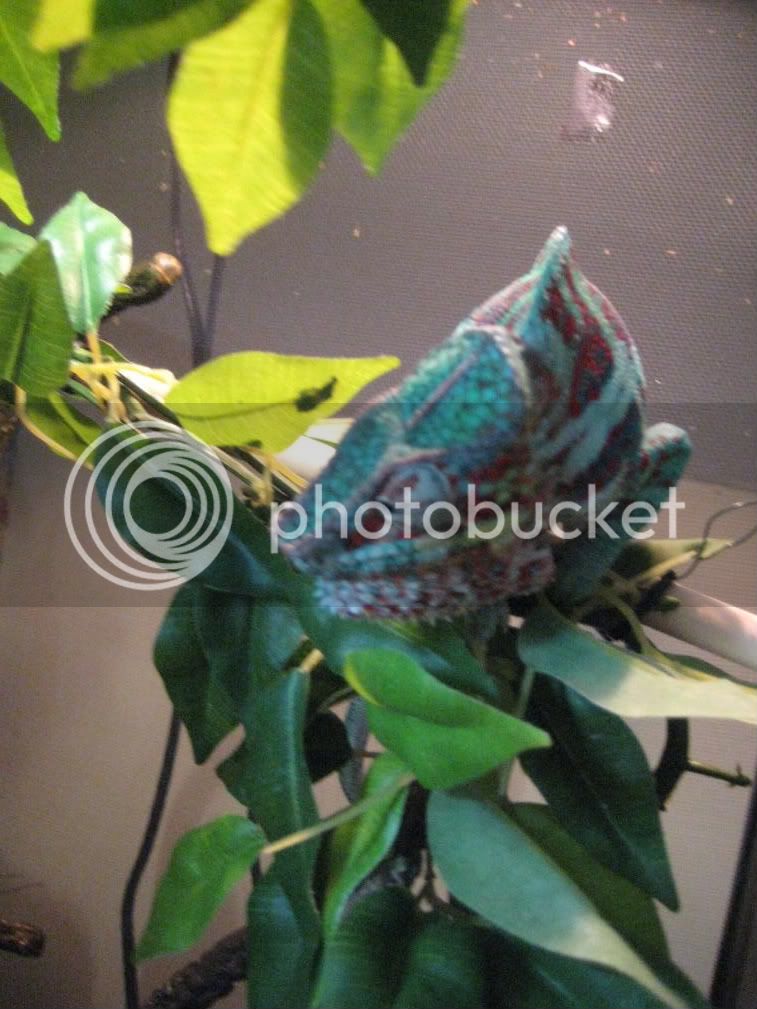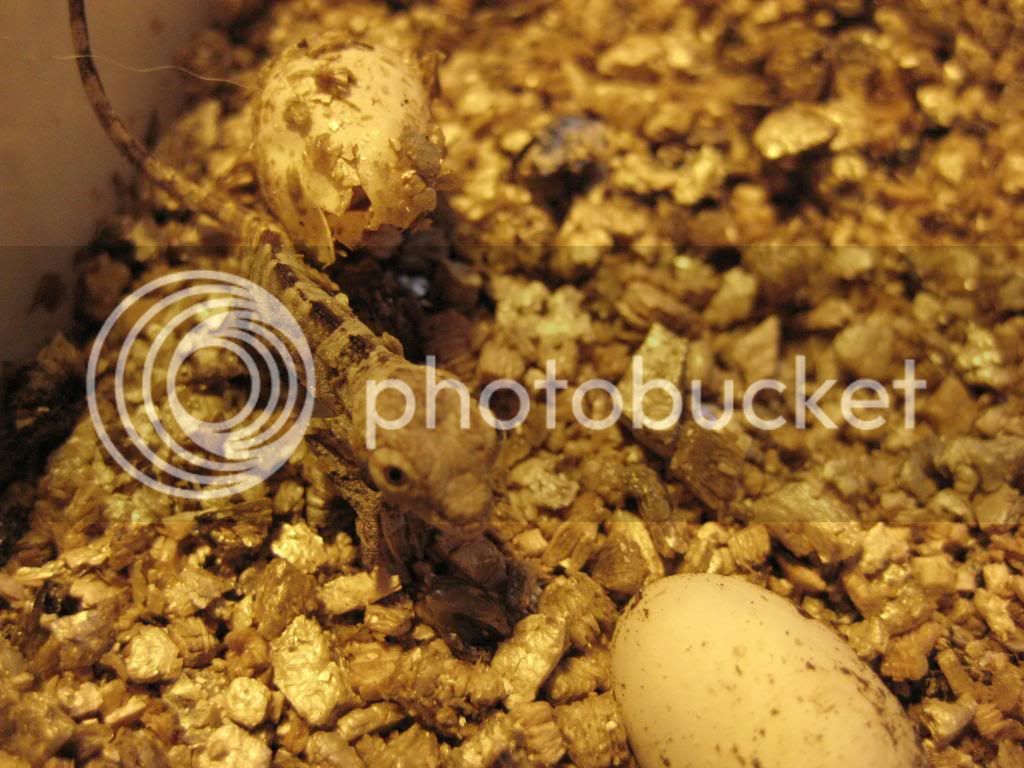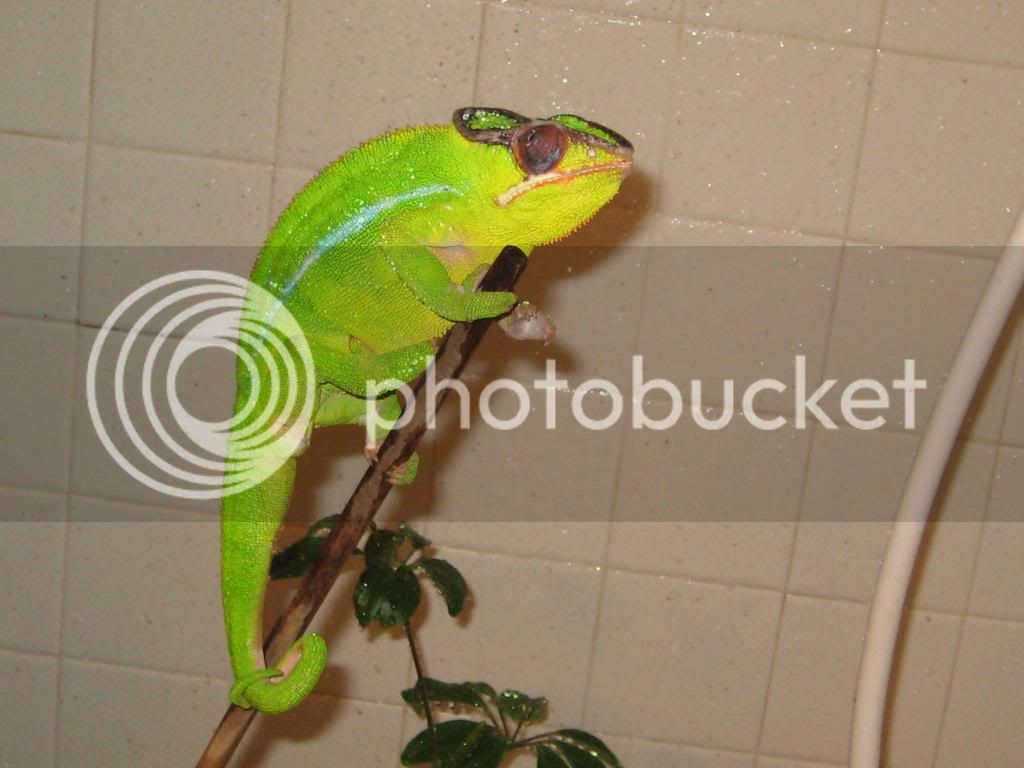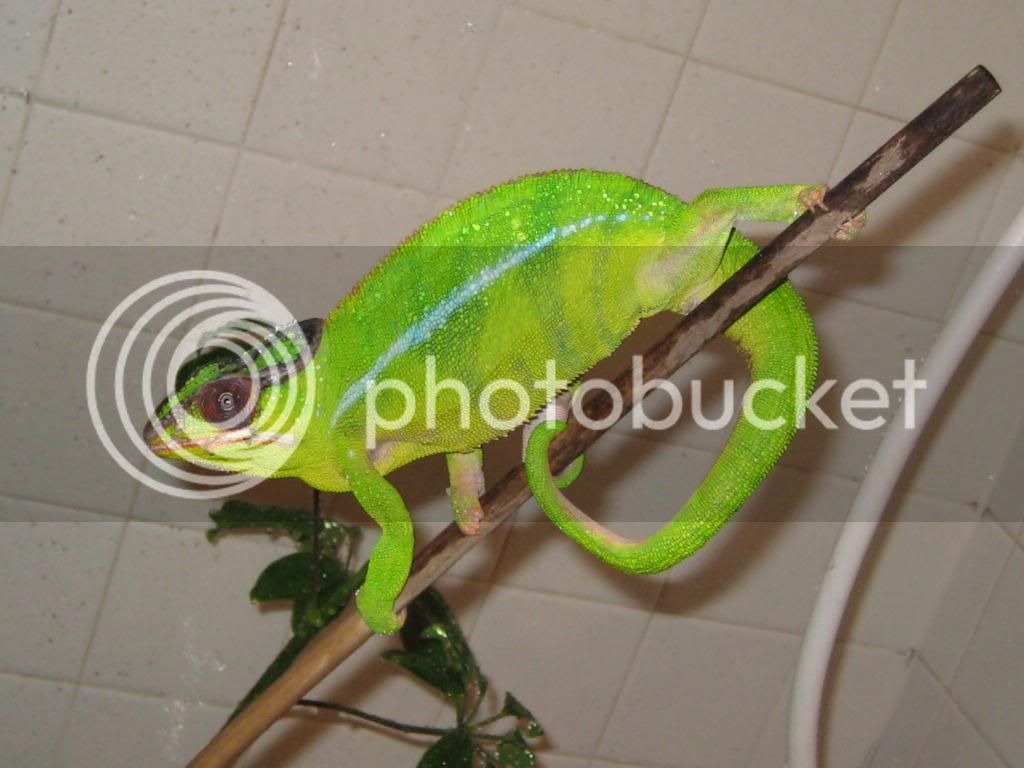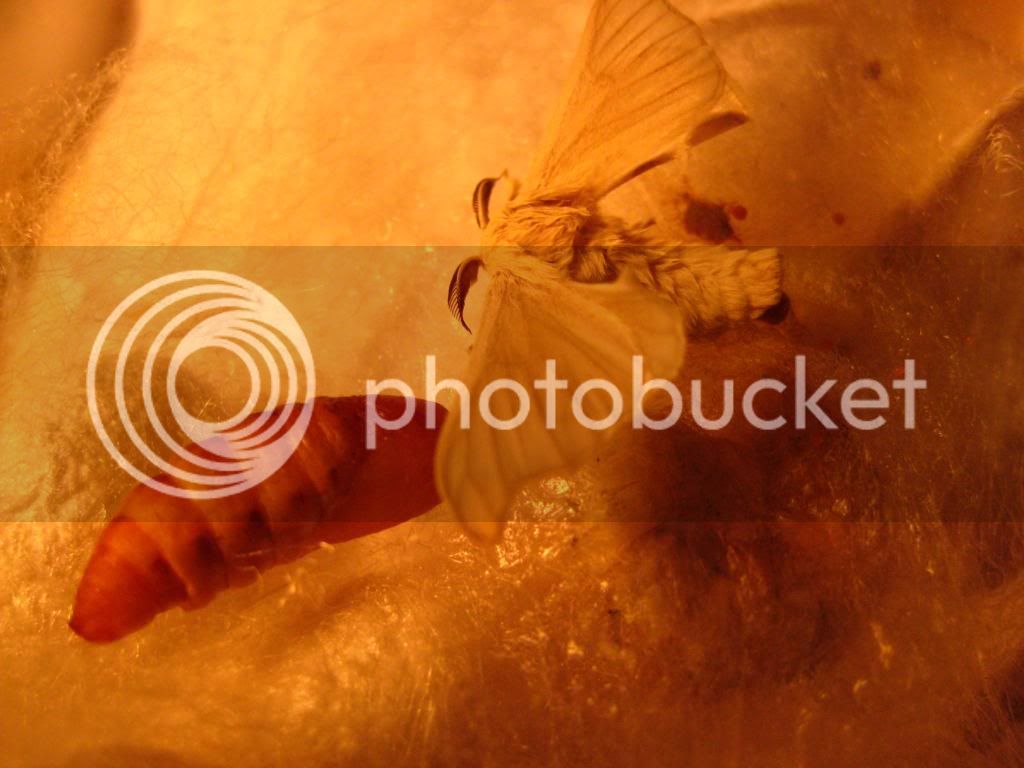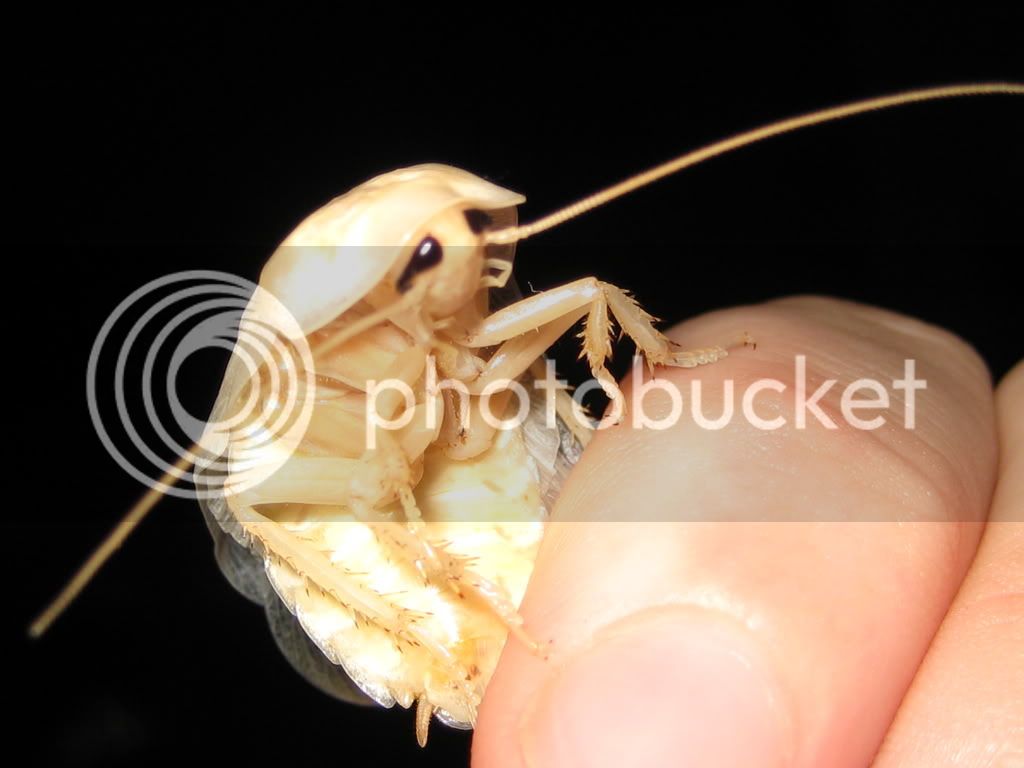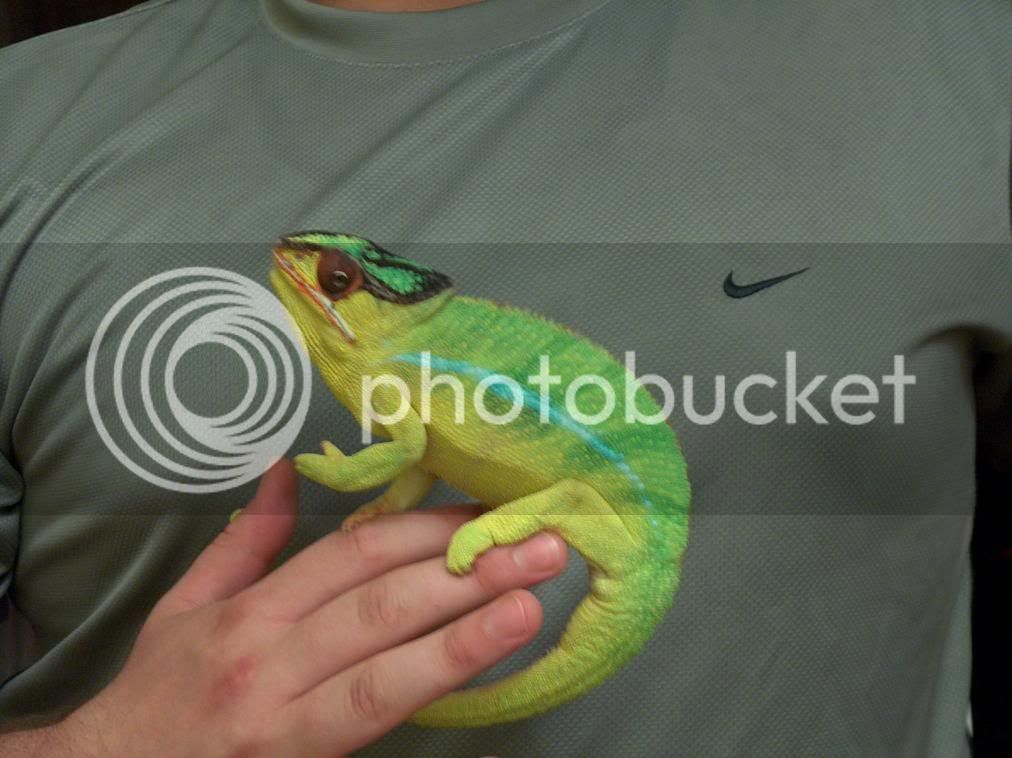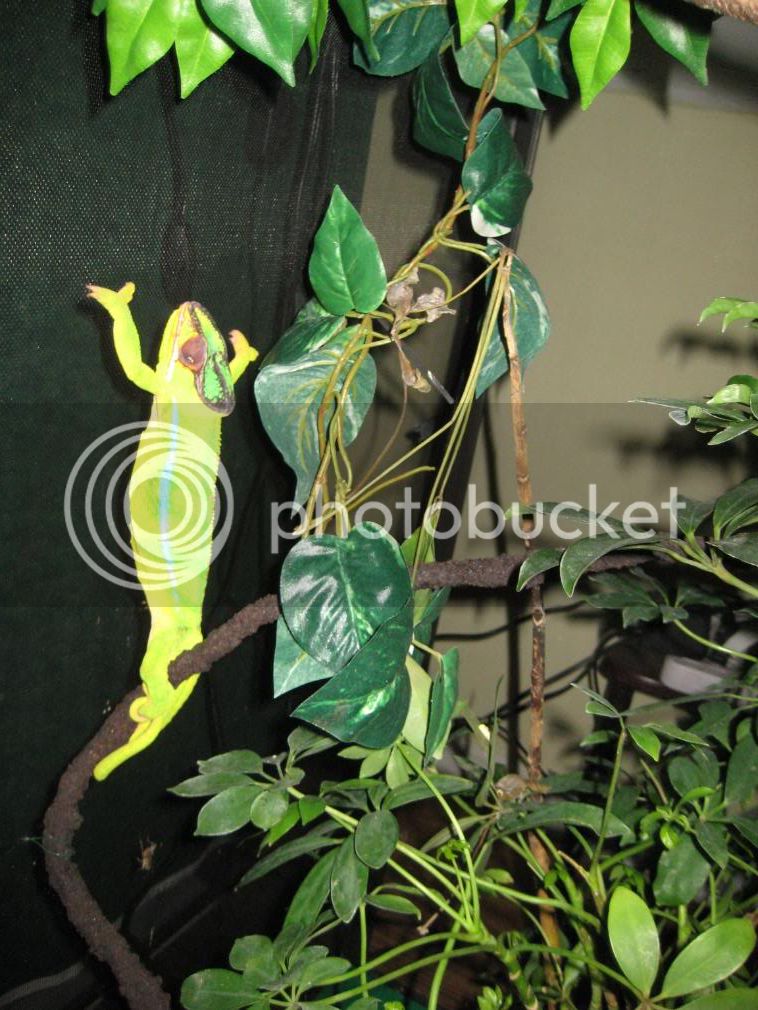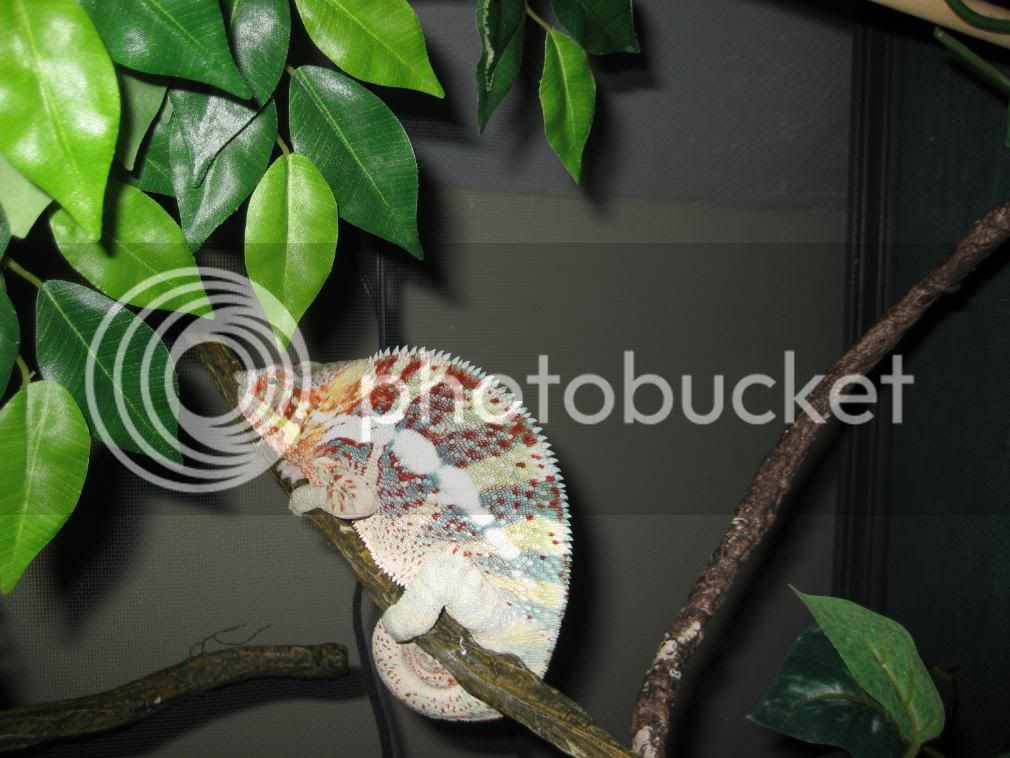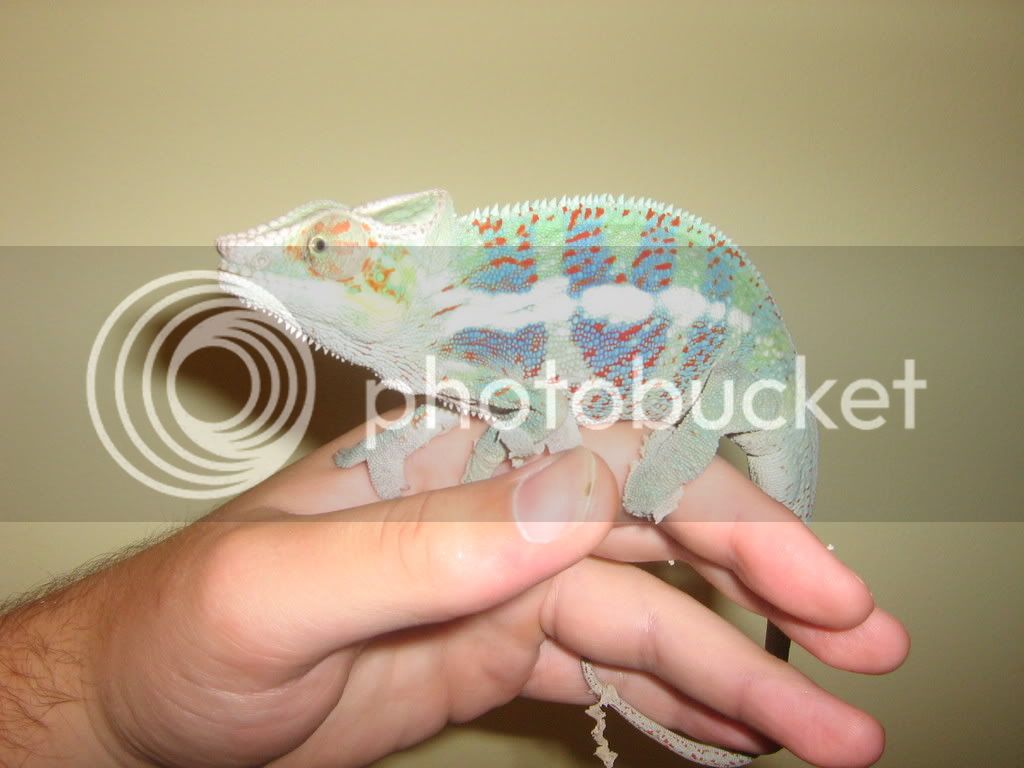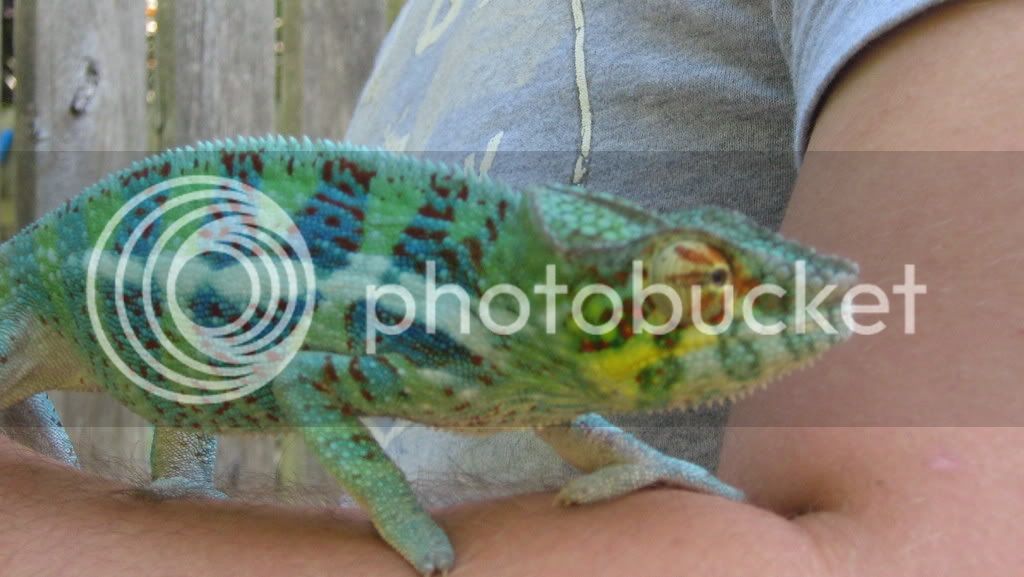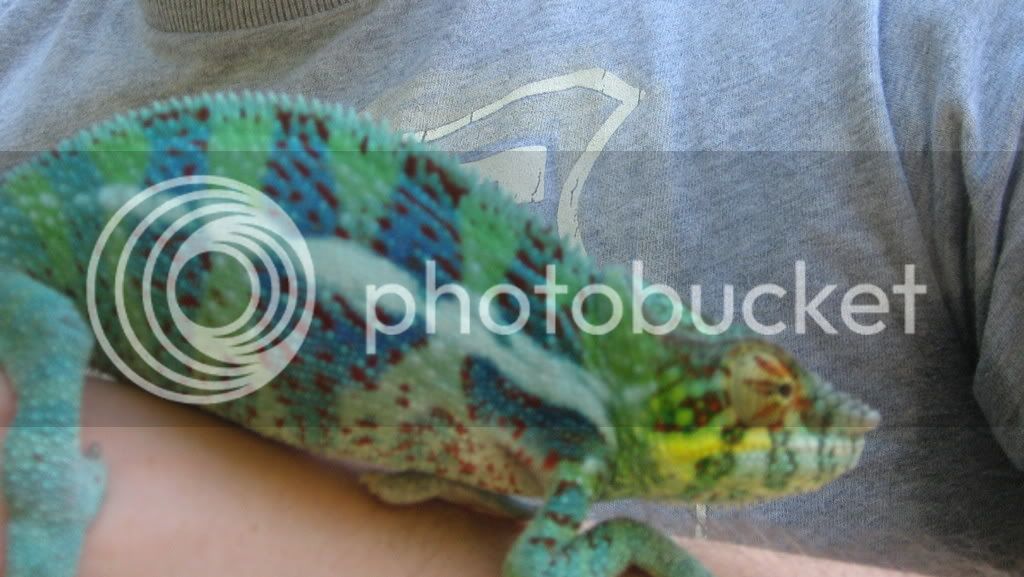WOWWIEEE! Very nice! No wonder you wanted some bees. :lol:
That is some crazy, beautiful collection. Must take a lot of dedication to keep them all healthy. The chams are pretty delicate, no?
I will go right a head now and educate those of you who are interested in Panther chameleons (Furcifer Pardalis)
I am going to tell you how I care for mine, and how I keep mine healthy. Other people have their own ways, this is mine.
Keeping newly hatched panthers healthy.
I have found keeping them in tubs is a whole lot easier. I went to the screen cage approach but it just didn't cut it for me. Too big, even if you do house 12 babies in it.
I get little shoe box containers and put a few fake leafy vines in there a long with a few twigs, sometimes I also use fiberglass mesh, very good for strengthening their grip. YOU WANT TO PROVIDE YOUR PANTHERS WITH DIFFERENT GIRTH SIZES. Helps them develop and get to know the feel of their grip better.
I use tap water, let it sit out for 2 days or sometimes I use filtered water from my sink and use that right away.
I mist their little fake leaves 7-8 times a day, making sure not to mist before everything dries up.
I house around 3-4 babies per container, and drop in 20-30 hydei flies a few times a day.
Dusting is very important, especially since fruit flies are not well gut loaded.
I feed them Hydei fruit flies dusted with bee pollen every day or so.
I feed them Hydei fruit flies dusted with Rep-cal calcium with Vitamin D3 every 2 days.
I feed them Hydei fruit flies dusted with Rep-cal Herptivite Mineral/Vitamin mix every 14 days.
Some Panther hatchlings just don't make it. Most likely because the female (mom, dam) wasn't all too healthy.
Once you see their little tongues shooting out fast it is awesome! I love their big eyes moving independently on their little bodies lol.
Their poop should be brown, with a white urate. The tail of the poop is the urate, if it is orange it means they need more water.
Make sure to not spray too much, droplets can drown a baby panther chameleon by getting around it's nostrils and mouth.
Panthers need to see their water moving in order to stimulate them. Baby chameleons seem to do better at spotting droplets than older chameleons. I mist because it gets droplets moving everywhere.
Once the hatchlings are getting bigger, I move them into a bigger place, a screen cage.
Now these babies are around 1 month old when I do this. I house around 10 of them per 1.5x.1.5x2.5 ft. all screen cage.
I place a 32 ounce delip cup in the center, and place a nice and full pathos plant.
In the middle of the pathos plant I place a little shallow 8 ounce deli cup. That is my feeder cup for the crickets.
I put around 30 1/8 inch crickets in the cup and it takes the crickets a few minutes to get out. I putt a couple sticks in the cup so they eventually climb out on to it. Good for the babies to see! lol.
Some babies get the hang of it and go towards the cup. I put leaves around the cup so the babies do not shoot the plastic by seeing their food through it. It is a clear plastic cup.
Once they shed for the first time, it is a great feeling because it means they are growing. More and more poop droppings will be noticed by the day! These little guys eat a lot if they are healthy.
Once they are 2.5 - 3 months old, you should house them in the same sized cage, only by groups of 5. Try your best categorize them by size. Bigger siblings can and will harass the younger ones.
You want to mist their pathos plant 5-6 times a day. I also place a couple little plastic cups with a little hole I poke through the bottom of it. I take a thumbtack and poke a hole from the inside.
I place the cups on top of the cage, and the drops fall onto leaves, creating a small splash. This also gets their attention.
I fill these cups 4-5 times a day.
You can drill holes on the bottom of their screen cages, and keep the cages on a shelf with buckets under to collect the water. Most breeders do that because they have tons of cages and misting systems.
I am on a small scale, for now!

I am planning on getting back into them, I want some Nosy Mitsios, Nosy Falys and Ambilobes. Right now I only have Ambilobes.
Now they are probably big enough to ship, you do not want to ship a panther chameleon under the age of 2.5 months old. Sometimes people do and these are not good people. People in the chameleon industry are well a ware of the risks of shipping really young panthers. They are soooo fragile!
I ship mine once they are 3 months old, or until they are a good 4 - 5 inches in total length.
Panther chameleons are amazing with showing more colors by each shed. They should each shed around 3 times by 3 months old. Sooner or later around 4 months of age they go through a dramatic growth spurt.
They will literally go from a total of 6 inches in length to 10 inchers in length just in 4-6 weeks!
Shed by shed, male panthers show more and more color. They will show you speckles of color, and soon they will begin developing their barring, the stripes on them! Some males get thick bars while others get thin bars. Same amount of stripes normally.
By 6 months of age they should have their basic colors. Light background color, strong color on their neck and face, and light coloring on their barring.
By 7-8 months old is the best age to tell if they will turn out to be A "SCREAMER".
A screamer is the alpha male of the clutch. This is the male that will most likely grow up and mature into the animal that has the most bright, vivid, vibrant colors out of all of them.
Most breeders keep 3-4 males that tend to show more speckles of color at the 3 - 4 month age mark, and they will normally keep one or two and sell the others for a higher price. These are labeled as "hold backs".
Most males sexually mature at around 8 months old, some are early bloomers and will be ready at 6 months! Some take their sweet old time and are not interested in females until they are over a year old!
I had a male that wasn't interested in any females until he was 14 months old!
Some males NEVER breed. Some males are just never interested in females.
Males will change their behavior when performing courtship. They will bob their heads, literally looks like a tick! They walk in a weird swaying motion and bob their head back and forth. Their colors become unreal. EXTREME COLOR!!!
Males show their most beautiful colors when asleep. They are feeling nothing, and their layers simply break away in a way where it shows their most brilliant colorations.
Males also change their color when they are feeling threatened. They will deflate their bodies and appear huge from the side view, they will get one their back legs only hanging from something, so they are ready to swing their bodies towards whatever they feel threatened by. They will head butt and bite. Some males can bite hard!
I've had males that never bit me before, while some males go out of there way to bite me! LOL.
All females will breed though, never heard of a female that NEVER BECAME RECEPTIVE.
Females tend to stay brown, grey, white and black, peach, orange, tan, with small hints of green, blue, red, pink, purple, orange speckles.
When they sexually mature, they will start showing extremely vibrant colors, such as pink, violet and purple. This is when they are receptive, and are willing to let a male mount them.
They become sexually mature at different ages, sometimes 9 months, sometimes 12 months. I don't breed my females until they are at least 12 months old. I wait until they are around 55 grams, at least!
Breeding panther chameleons -
Make sure both are clean from any sort of parasites, get a fecal check.
The female should be very pink, almost purple all over.
The male should be, well... LOL just a male! haha you know what I mean? lol
Start by introducing the female to the male by bringing her to HIS cage, this is HIS territory.
If the male and female remain calm, do not puff up and get mad, let the female climb off of your hand with her little mitten gloves for hands lol and climb up on a branch.
Females generally walk away, almost playing hard to get. It is like they instinctively know that the male wants her so badly. lol.
Watch until you see the male bob his head, make sure when the male approaches her, she does not puff up. Some males advance fast while others take their sweet time.
Some males do not connect and penetrate the first time, while others are smooth lol.
You can leave if everything remains mellow.
Come back in an hour. Hopefully they are still mating. If not, and you do not know if they connected, try again the next day.
I sometimes leave the female over night, they will wake up and most likely mate again. They even eat with one another, it is very cute. It is especially cute when they are caught sleeping next to one another! Chameleons are so cool when they sleep, sometimes they sleep hanging from the top of the screen ceiling!
After a few good mating, separate them. Two - three days is good.
Continue with their daily needs.
Females become a total different species in the sense that their daily needs change totally.
When they're cycling eggs, it is extremely important to over feed them the first week right after mating, with extra Rep-cal calcium with vitamin D3. Just a tad bit extra.
Offer them more water because in the 7-10 days prior to laying, they are going to stop eating, and sometimes do not drink enough. You must try your best to keep her healthy, and provide her a lot of privacy.
You need to place a towel around their cage, they need absolute privacy in order to feel safe to lay their eggs.
In 25-40 days, the female will begin looking for a spot to lay her eggs.
I always keep a tiny peak hole, I love catching them digging! It is awesome to watch how strong these little women are!
I always place a nice sized bucket in their cage. I fill it with organic soil, and mix it up with water until I can dig my hand down under and make an L shape tunnel without it collapsing.
You must make sure that that soil is not too dry, it will collapse on her, and she might get stuck and become egg bound.
Not laying eggs when they are due, will be a very painful death for her.
I remember one time I had a female that that happened to, I took her out. I opened her up and separated her eggs. They did not look calcified enough to actually grow. Fortunately after a month of incubation, they started showing white, and growing!!! They eventually hatched out. I only had 5 survivors out of 20 or so.
Females lay on average 24 eggs, smallest amounts around around 15-17 and largest amounts are in the high 40's. Rarely do they hit 50.
A healthy female will make a full recovery by showing you how hungry she is! I always offer them all they can eat for the first few days, and they wean them down to their regular intake.
Food for your chameleons -
Quality is what truly counts.
Keeping your feeders clean and as bacteria/parasite free as possible.
When gut loading, it is important to feed your insects healthy food! Your panther chameleons are what their insects eat! LOL
Crickets, super worms and dubia roaches all eat the same sort of gut load - I feed mine a mixture of kale, romaine lettuce, sweet potato, carrot, carrot top, melon, cooked egg yolk, apple, orange, yellow squash and grape leaves.
I also feed the crickets, super worms and dubia roaches a dry mixture of - bee pollen, spirulina, kelp, oat meal, baby cereal, wheat germ, and a few other things.
Babies 3 months old and younger, get a helping of food 3 times a day. Real early, early, and real early afternoon.

I never over count their cages with food, that confuses and annoys them!
I feed my juveniles 3 - 7 month old panthers one helping of a good count of food.
Example: An 8 inch in total length male. I would feed him 10 1/2 inch crickets, 3 medium sized dubia, 6 super worms, a couple 1.5 inch horn worms, or a few 1 inch silk worms.
I also feed my juveniles blue bottle flies, as well as my adults. I always dust the flies with bee pollen for my older chams.
Adults should be fed less, they should stay lean, they are done growing.
Example -
I feed my adult females 7 3/4 crickets every day.
I feed my adult males 8 3/4 crickets every day.
Sub-adult and adult males get 2x2x4 ft. all screen cages. I zip tie fiber glass mesh to the sides of their cage, because the little screen holes are too small for their big nails, they will eventually fall or loose some nails. Their nails do not grow back. Same as well with adult females.
I once had a misting system, I sold it because I cut my herd down by a lot. I don't have as many as I used to, but that is going to change soon!

I use Zoo med's big drip system, OR, just have a 32 ounce deli cup on top of their UVB light fixture, and have the hole int he cup fall on one of their tallest leaves in their enclosures.
I cup feed my panthers too, once they get their own cage.
Cup feeding is great, you don't have to worry about taking out food that they didn't eat by 2 P.M. and you also don;t have to worry about the buggers pooping in their cage.
I quit cleaning their cages thoroughly, it is not necessary as long as you clean their plants when you buy them, and re-pot them with organic soil. You should also keep baby whips around, I spot clean the bottom of their cage. Whenever I pick up their poop, I dis-infect it a little bit.
All panther chameleons are native to ONLY Madagascar!!!
Oh and in case if some of you didn't know, panther chameleons come in different color morphs called locales, in other words regions.
Example: A panther coming from the town Nosy Be, will show mostly blue and little bit of reds.
Example: A panther coming from the town Tamatave, will show mostly red and white.
Some towns called Ambilobe, the panthers there have a lot of colors on them!
The panthers from Mitsio, are mostly green, and turn yellow with little bits of red when excited.
There are tons of locales, the most common in the pet trade are:
Ambilobe
Ambanja
Nosy Be
Sambava
Nosy Faly
Ankaramy
Nosy Mitsio
Tamatave
There are around 5 other locales that are sold every once in a while but these are the most common. Unfortunately, Tamatave and Nosy Mitsio are not as popular as they used to be, so you don't see many for sale any more.

Nosy Faly are pretty new to the market in the US, so these are much more expensive. These are normally a dark blue, weird blue/green color with dark red dots at rest. When excited, they get a lot of white in their barring, and their other colors like blues and reds light up a lot more brighter! These are pretty awesome! I posted a picture of a Nosy Faly that I sold, he is pretty big, I bet you can spot him in my pictures above! Red white and blue, mostly blue! LOL
Hope this helps some of you, if you are debating whether or not to get a panther chameleon.
Keep in mind, prices have to do with quality. I highly recommend Screameleons.com. Vince, the owner, has the best customer service and has always taken care of everyone I know who has done business with him.
So, what did we learn guys?
Every day needs -
Turn lights on at 7 a.m.
Water chameleons.
Feed their insects.
Once cage is dry and insects have been eating for 30-40 minutes, dust insects.
Feed chams.
Water chameleons.
Look for poop.
Water chameleons.
Take out whatever insects they did not eat.
Water chameleons.
Look for poop.
Water chameleons.
Look for poop.
Oh yeah, clean poop if you find some! LOL
Mist cage, turn lights off.
Simple.
You can really minimize this by buying a misting system that turns on and off by a timer. Drilling holes in the cage floor so it does not over flow with water.
Cup feeding so you do not have to hunt down prey items in the middle of the afternoon.
And have a timer that turns the lights on and off.
Always look at their eyes too, make sure they are nice and big and bulgy. Chameleons eyes should look like round balls.
Well, these are the basics. Didn't go into health issues, nor incubating eggs but it's pretty good info. This is what I do and my chameleons' grips are nice and strong, and they are all very alert and eating!

P.S. Lots of people don't supplement their panthers with vitamin D3 more than twice a month. I have been doing what I do for a long time, and mine are perfect. I do what Screameleons tells me to do.
Rules -
Don't ever buy a tiny baby, less than a total of 4 inches. It is too small to ship or take care of for a new comer.
Join chameleonforums.com if you ever get into chameleons, these animals are the majestic creatures of Madagascar!
Hope you liked what I told you guys!

